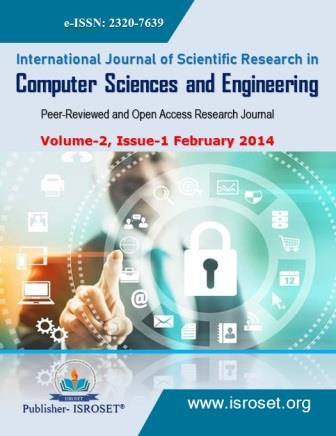An Efficient Image Sharpening Filter for Enhancing Edge Detection Techniques for 2D, High Definition and Linearly Blurred Images
Keywords:
Edge detection, Canny edge detection technique improvement, Image Sharpening Filter, Comparative analysis of image with proposed Filter and 2D FIR FilterAbstract
The edge detectors are widely used in computer vision to locate sharp intensity changes and to find object boundaries in an image. Image Edge detection significantly reduces the amount of data and filters out useless information, while preserving the important structural properties in an image. Since edge detection is in the forefront of image processing for object detection, it is crucial to have a good understanding of edge detection algorithms. The construction of a pre-processing filtering tool for edge detection and segmentation tasks is still a challenging matter. In this paper the revision of edge detectors are done to improve their detection accuracy. This work proposes an edge sharpening filter to sharpen the edges of an image prior to detection and then apply the edge detectors for the better results. The difference in the output can be observed by comparing the results of edge detection under normal and filtered conditions.
References
Aizenberg, I.N.,“Extraction of the Small Details on the Noised Images and their Sharpening: Implementation on the CNN”, 4th IEEE international Workshop on Cellular Neural Networks and their Applications S. Seville, Spain, June 24-26, pp. 31-36,1966.
Bao, P., Zhang, L., and Wu, X., “Canny Edge Detection Enhancement by Scale Multiplication”, IEEE transactions on pattern analysis and machine intelligence, vol. 27, page no., 9 September 2005.
He, S., and Yang, J.,“Prominent Object Sharpening Using Reference Image”, International Conference on Image Analysis and Signal Processing (IASP), pp. 232 – 234, IEEE 2011.
Hocenski, Z., Vasilić, S., Hocenski, V., “Improved Canny Edge Detector in Ceramic Tiles Defect Detection”, 32nd Annual Conference on Industrial Electronics IECON, pp.3328-3331, IEEE 2006.
Hui, P., Ruifang, Z., Shanmei, L., Youxian, W., Lanlan, W., “Edge Detection of Growing Citrus Based on Self-adaptive Canny Operator”, International Conference on Computer Distributed Control and Intelligent Environmental Monitoring, pp. 342-345, IEEE 2011.
Kun, H.Q., Caiet, Z.Y., “Edge Detection Algorithm of Core Image Based on the Improved Canny Operator”, 3rd International Conference on Computer Science and Information Technology (ICCSIT), pp. 411-413, IEEE 2011.
Kobayashi, T. and Tajimaet, J., “Content-Adaptive Automatic Image Sharpening”, 20th International Conference on Pattern Recognition (ICPR), pp. 2214-2217, IEEE 2010.
Lan, J., Zhang, H., Xiong, G., “Improved Filtering Method Used for Linear CCD Light Spot Image”, International Conference on Image Analysis and Signal Processing (IASP), pp. 271-275, IEEE 2011.
You, S.J., and Choet, N.I., “A New Image De noising Method Based On The Wavelet Domain Nonlocal Means Filtering”, International Conference on Acoustics, Speech and Signal Processing (ICASSP), pp. 1141-1144, IEEE 2011.
Yu, Z.J., Yan, C., Xiang, H.X., “Edge Detection of Images Based on Improved Sobel Operator and Genetic Algorithms”, International Conference on Image Analysis and Signal Processing (ICASP),pp. 31-35, IEEE 2009.
Zhang, X.Q., Yang, K., Hao, B.Q., “Cell-Edge Detection Method Based on Canny Algorithm and Mathematical Morphology”, 3rd International Congress on Image and Signal Processing, pp. 894-897, IEEE 2010.
Zhang, Z., Zhao, G., “Butterworth filter and Sobel edge detection to image”, International Conference on Multimedia Technology (ICMT), pp. 254-256, IEEE 2011.
Zhao, H., Qin, G., Wang, X.,“Improvement of Canny Algorithm Based on Pavement Edge Detection”, 3rd International Congress on Image and Signal Processing, pp. 964-967, IEEE 2010,.
Zhao, W., Wang, L.,“A New Method of the Forest Dynamic Inspection Color Image Sharpening Process”, 3rd International Conference on Advanced Computer Theory and Engineering, pp. 211-214, IEEE 2010.
Downloads
Published
How to Cite
Issue
Section
License

This work is licensed under a Creative Commons Attribution 4.0 International License.
Authors contributing to this journal agree to publish their articles under the Creative Commons Attribution 4.0 International License, allowing third parties to share their work (copy, distribute, transmit) and to adapt it, under the condition that the authors are given credit and that in the event of reuse or distribution, the terms of this license are made clear.







